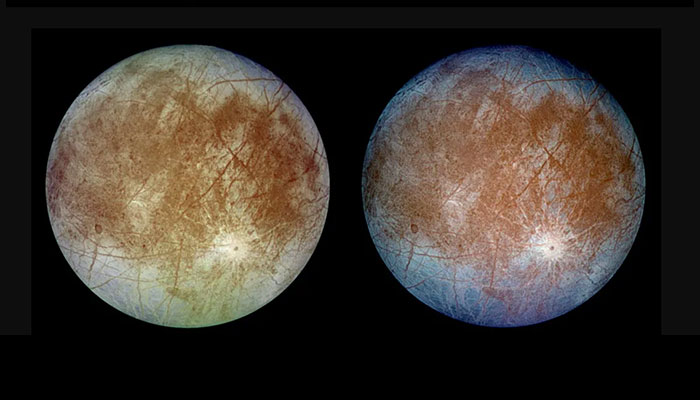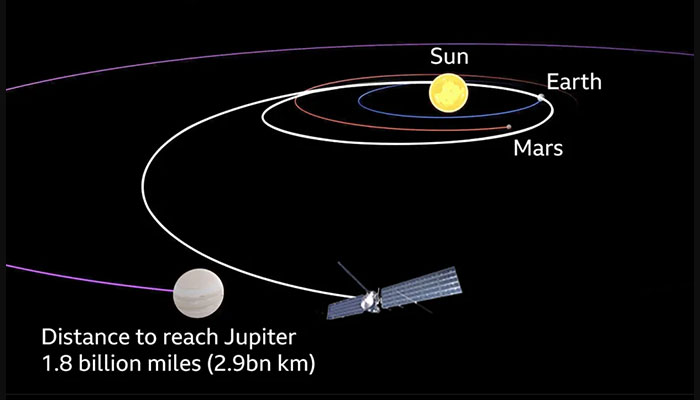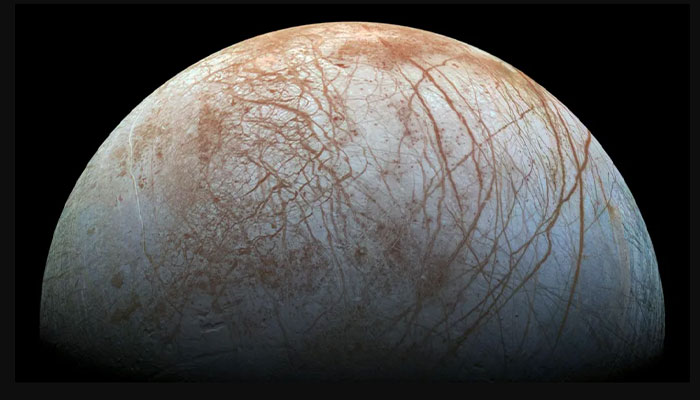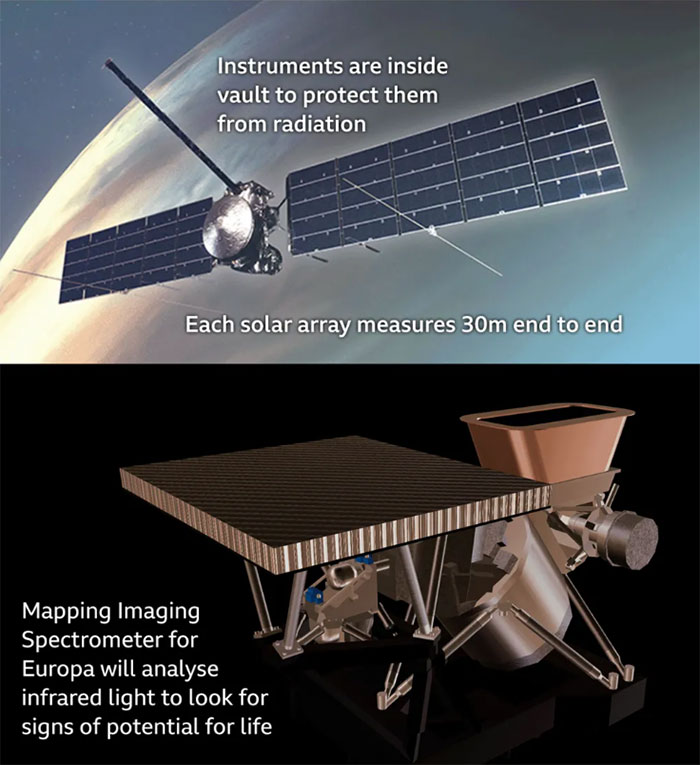The mission to find extraterrestrial life has begun. At 16:06 GMT, NASA launched the Europa Clipper ship from Cape Canaveral, Florida, to search for signs of life on one of Jupiter’s frozen moons.
The spacecraft has embarked on a 1.8 billion-mile journey toward Europa, a moon that scientists believe could mark humanity’s first recorded encounter with alien lifeforms in outer space.
The groundbreaking mission will see the vessel travel for six consecutive years until it arrives at its destination in 2030, with discoveries that could reshape our understanding of life in the solar system.
“If we discover life so far away from the Sun, it will imply a separate origin of life to the Earth,” said Mark Fox-Powell, a planetary microbiologist at the Open University, to the BBC.
NASA has officially launched a ship designed to search for extraterrestrial life on Jupiter’s moon, Europa
Image credits: Mario Tama/Getty
The key to Europa’s significance lies in its icy crust, which may contain a vast ocean with twice the water found on Earth. This water may contain essential chemicals that support a variety of life forms.
Due to its thick icy surface, 25 kilometers thick, Europa is expected to shine five times brighter than Earth’s moon thanks to its reflective water ice.
Scientists believe that finding life on another planet or moon would allow them to extrapolate the phenomenon to other galaxies beyond our own. “It could mean life is prevalent,” Fox-Powell explained.

“Europa has the suitable conditions below its icy surface to support life. Its conditions are water, energy, chemistry, and stability,” said Sandra Connelly, deputy associate administrator for NASA’s Science Mission Directorate.
“To do this, we will collect data from nine instruments and one science experiment. Science includes gathering measurements of the internal ocean, mapping the surface composition and geology, and hunting for plumes of water vapor that may be venting from the icy crust.”
The project has been in the works since the late 90s and has now become a reality with the launch of the Europa Clipper

NASA has been discussing the journey to the icy moon since the Galileo spacecraft, which orbited Jupiter in 1995 and finished its mission in 1997.
The National Research Council then recommended a mission to Europa in 2013, with an estimated cost of $2 billion at the time, which more than doubled over the years to $5.2 billion at the time of launch.
When fully fueled, the spacecraft weighs more than 12,500 lbs (5,700 kg) and is powered by 28 thrusters.
The Europa Clipper will fly around Europa an estimated 50 times, each time receiving a massive amount of radiation that could prove disastrous for the mission

The Europa Clipper is equipped with a laser, codenamed “Reason,” designed in part by Britney Schmidt, a professor of Earth and atmospheric sciences at Cornell University, to detect the presence of lifeforms.
If everything goes according to plan, the laser will see through the ice into the moon’s magma chambers and tectonic plates to provide a complete map of the area. The presence of intense radiation, however, could ruin the team’s efforts.
To safeguard the ship against this phenomenon, the NASA team built a radiation-proof vault that’s “heavily shielded“ to protect the vessel’s essential electronics.
The Europa Clipper will use the “slingshot method“ to gather enough gravity for its 6-year-long voyage to Jupiter

As a fuel motor alone will not be enough to carry the ship through the 1.8 billion miles that separate Earth from Europa, the vessel will first build momentum out of Earth and Mars’s gravitational pull.
Officially known as a “gravitational slingshot,“ this method involves getting close to an astronomical object’s orbit and using its gravity to accelerate, redirect, or reduce a ship’s speed.
The assist maneuver is a proven method widely used since its adoption in 1959 when the Soviet probe Luna 3 used it to capture images of the other side of Earth’s moon.
“Hugely Significant”: Nasa Launches Spacecraft To Jupiter Moon In Search Of Alien Life Bored Panda







